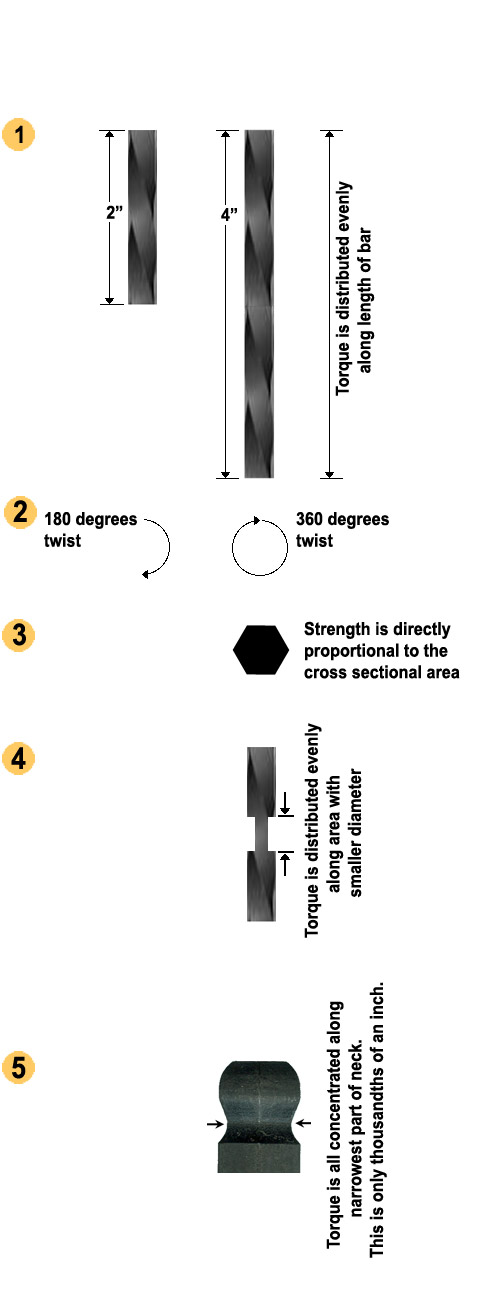|
Why ballends break without warning: The concept
of why ballends break without warning is a simple one. There
are just five basic facts that need to be understood:
|
- Assume that both blades to the right have
been torqued to the point of breaking.
- The 4” blade is twice as long as the 2” blade, so it can also be
twisted twice as many degrees before breaking. Torque is always
distributed over the length of the weakest part of the blade, but since
these blades are of a consistent diameter, the torque is distributed
evenly over the entire length of the blades.
- Breaking strength is directly proportional to the smallest cross
sectional area on the blade. The length of a blade has no relationship
to its ability to deliver torque. A long blade delivers the same amount
of torque as a short blade.
- If a section of the blade was to be turned down to a smaller
diameter, all of the torque would be distributed over only the smaller
diameter length. The smaller that length becomes, the more concentrated
the torque will become, and as demonstrated in #1 above, the fewer the
degrees of twist before the blade breaks.
- A ballend is really a case of these concepts taken to the
extreme. The neck diameter represents the smallest cross sectional area
on the blade, and the area where the torque is focused is only a few
thousandths of an inch!
Clearly, with practically no degrees of twist, the neck reaches its
breaking point and snaps off. Because the degrees of twist were so
small, the operator does not feel any yield.
Bondhus Advantages:
Even Bondhus cannot redefine the laws of physics. All ballends break without warning the operator with the
telltale feel of the blade or tip yielding. In spite of this,
Bondhus ballends are still less prone to breakage. Why?
- Protanium® Steel is stronger than the steel used by any other
competitor.
- Protanium® Steel achieves greater torque than the
steel used by any other competitor.
- Bondhus carefully matches the torque capacity of
every handle with the torque capacity of its associated
blade.
|
 |
Using a power driver poses a unique type of problem. At the moment the head of a fastener
begins to seat, there is an abrupt spike in torque. This can damage the
tool, the fastener, or the work piece. Inferior quality hex
tools greatly exacerbate the problem, while high quality
Bondhus tools help to minimize breakage.
Bondhus blades and bits are stronger than any other brand available,
they fit into the screw head more precisely, and withstand hard use.
In addition, Bondhus handles minimize the potential for overtorqueing
their associated blades. Even so, care and common sense should still
be exercised, especially when using power drivers. |


